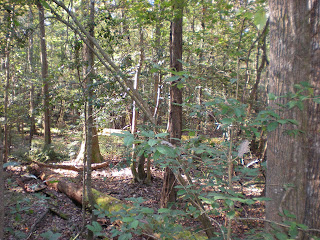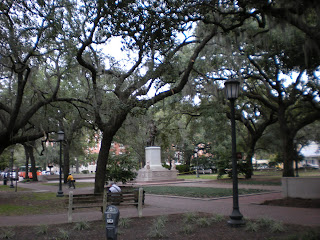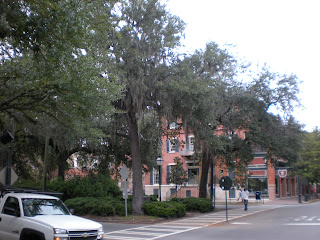On 3 May 2012 I left San Diego and drove to Costa Mesa. My long time friend, JoAnn Vanderwerf, her husband Ron and I caught the red-eye from LAX to Sint Maarten. They had been after me for years to go with them but I begged off because I spent my vacations with family. BUT, now that I am retired, there are no more excuses. Mary and Brian, some friends from Huntington Beach, met us there a couple of days after we arrived.
We got to our rooms about 4 O'Clock the next afternoon (4 May 2012). We ate dinner at a beach bar and I was introduced to my new favorite mixed drink: BBC. Don't ask me what is in it, but it is VERY good. We stayed 16 days, so I had quite a few of them. Yum, yum!
The Dutch side of the island is called Sint Maarten, people speak English, and business is done in the U.S. dollar. However, the French half is called Saint Martin (different spelling) everyone is expected to speak French, and use the Euro. Some residents act offended if people do not speak French. We stayed on the Dutch side most of the time. We vacationed at the Atrium Resort on Simpson Bay. Ron and JoAnn go every year because the 5th of May is Ron's Birthday.
One of the places we went to at least every other day was Phillipsburg, the capital of the Dutch side. Cruise ships dock at the Phillipsburg harbor. On wednesdays there are usually 3 Cruise ships in port.
The beach in Phillipsburg. It was about 2 O'clock in the afternoon and in the mid '70's but very few people (mostly tourists) on the beach. I guess when you live in paradise, you do not know what you have.The main pier in Phillipsburg. If you look at the southern horizon beyond the third light pole, the island of Saba is barely visible.
This is Mullet Bay on the North-western coast. In less than 15 minutes, I was red as a lobster. I had put on SPF 50 before going into the water, but I failed to put it back on after coming out. This was the second or third day of our vacation. Needless to say, I was much more careful the rest of our stay.
This is the main road between the Dutch & French sides. One day we went over to the other side just to see what was there. The sign on the right announces that you are now in French territory.
One of the main tourist attractions is watching airplanes arrive and take-off at the airport (on the Dutch Side). Planes come in from the north west, cross a narrow beach and a two lane road. The landing gear barely clears a six foot fence next to the road. As planes prepare for take off, they taxi all the way to the fence to turn around. When they take off, they are headed towards the south east. Directly in front of the planes is a ridge of low lying mountains. The planes must bank to the right as soon as their wheels leave the tarmac to avoid hitting the ridge. While we were watching, a lady stepped over the guard-rail to take a picture while a plane was turning around. The exhaust from the engines blew her over. She was lucky and landed on her butt. She could have been blown over the guardrail and run over by a car. (By the way, the guy in the white shorts with the black backpack taking a picture is Ron Vanderwerf! I was sitting at the beach bar not about to be blown away by the plane)
The sea water in the Caribbean is so blue and as warm as a bathtub. It has so much salt in it that floating along with the tide is effortless, very relaxing. We spent entire days lounging on beach chairs, under umbrellas, and sipping BBC's when we were not in the water. Sunset on Simpson's Bay.
The marina at Simpson's Bay was beautiful in the early morning. We arrived at 7:30 am to take the ferry over to Saint Barthelemy (St. Bart's).
The ride over was rough, the captain said it was because we were going against the tide. Several people, myself included, got sick. Going back to St. Maarten was much smoother so no one got sick. However, I had visited a pharmacy on St. Bart's and purchased ($20) some wrist bands that the pharmacist recommended for motion sickness. I definitely wore them. Whatever the reason, I did not get sick going back.
The beach at St. Bart's. The one thing I discovered about St. Bart's is that it is way over priced. I wanted to buy a souvenir but was unable to find anything under 10 Euro ($15). We ate lunch at a beach bar. I had two BBC's and an order of sweet potato fries. My portion of the bill equated to $39. Unlike the free beach chairs at Simpson Bay, the beach chairs on St. Bart's were rented for 15 Euro per day ($22), since we were only at the beach for a little over an hour, we did not rent them. Overall, I was disappointed with our day trip. If I go again next year, we will go to Anguilla and swim with the Dolphins and not go back to St. Bart's.
On the flight back, we were upgraded to first class. What a way to end a dream vacation. I sat next to the nicest young man I have met in a long time. He helped me by putting my suitcase in the overhead bin when I was taking my seat. He had the biggest ring on his finger with a sapphire about ten times as big as the one on my ring finger. For the first two or three hours we didn't talk much. After lunch I asked him where he lived. He said his home was in Miami. Then I asked why he was going to LA. He said that he was going to LA to make some commercials for ESPN. He said something about football and I told him that I don't like football. He just grinned.
Like an idiot, I asked him what his name was so I could say that I had sat next to him from Miami to LA. He just grinned again. We talked about Sint Maarten and some of the things I had done. I told him I was headed home and that I had a couple of hours drive before I would be home. He said that ESPN was sending a driver for him so he didn't have to drive in the LA traffic. He said that they were putting him in a four star hotel on the beach in Santa Monica. (It still didn't dawn on me that I was talking to a famous person. Talk about dense!)
When the flight ended, he got my carry-on down for me, we wished each other luck and he disappeared. At the baggage carrousel a man approached me asking what "Tim" had been talking to me about. I asked him "Tim who?" He said "Tim Brown of the Oakland Raiders, you sat next to him for six hours!" I had no clue. After I got home, I Googled Tim Brown. That was him, but he is no longer with the Oakland Raiders, he has retired. Just like me, but he is much younger.





























































